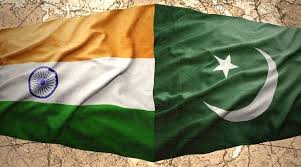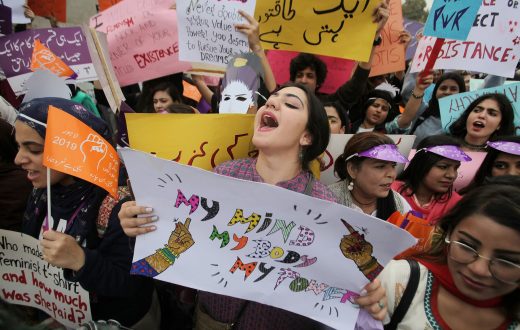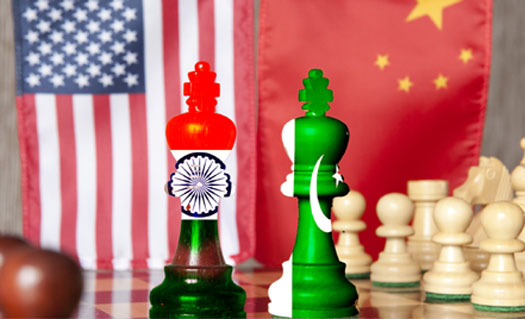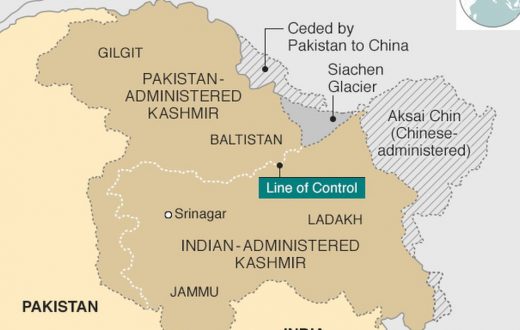BACKGROUND
In the case of Pakistan, Bangladesh and India, conflict and religion have shaped foreign policy, and you’ll see how. In 1905, the British found the then Bengal presidency in India to be a very difficult province to manage and thus, ordered its ‘partition on the basis of religion’ to ease its administration. Although most Hindus vehemently opposed the division as a ‘divide and rule policy’, many Muslims supported it. The Muslim dominated the eastern regions of the Bengal presidency, which had comparatively lesser development and infrastructure than its western counterpart, dominated by the Hindu populace. However the political upheaval forced the British to rescind the partition of Bengal and finally the province was reunited in 1911.
THE SEQUEL – INDEPENDENT STATE FOR MUSLIMS IN SOUTH ASIA
However as the calendar drew closer to 1947, the communal separatists devised the “two-nation theory.” This “theory” claimed that the Muslims and the Hindus in the subcontinent constituted two very different and thus, irreconcilable nationalities. This “theory”, silent on how in spite of vast class, linguistic, ethnic, social, and cultural differences, opined that Muslims constitute a unified nation on a basis of “divine sanction.” The Bengali Muslim leaders also played a strong role in the Pakistan Movement, as much as the Punjabi and Sindhi Muslim leaders because they believed that ‘religion’ would be a unifying factor and language wouldn’t divide them. In addition to that, they also thought that Muslims would be safer under the rule of an Islam-oriented country, that is, Pakistan. All of this led to East Bengal becoming East Pakistan, politically a part of the sovereign country of Pakistan in 1947.
So, while ‘religion’ cut what was then India into two parts, it united a vast population separated by miles to form a single country – Pakistan. That way, ‘religion’ became a unifying yet divisive factor.
SIDELINED EVEN BEFORE BIRTH
The idea of a distinct state for the Indian Muslims was first proposed by Muhammed Iqbal; his scheme, “did not include Bengal”; it was confined to setting up a separate state for Indian Muslims in the North-West of the subcontinent. The name Pakistan, coined by Chaudhuri Rahmat Ali along with a group of students in Cambridge, was an acronym for Punjab, Afghania (Pathan), Kashmir, Sind, and istan (meaning country in Persian). Hence, Rahmat Ali’s scheme too failed to include the “lesser breed” of Bengali Muslims.
IDEOLOGICAL RUPTURES
Howbeit ‘religion’ could keep neither the people nor the politicians together. The once unifying factor – ‘religion’ – could not cement the fractures that followed in the erstwhile East Pakistan and West Pakistan. It was a single country ‘predominantly’ comprising of Muslims divided only by a huge, Hindu dominant country, India (geographically). But all was not well between the east and the west of the same country following the same religion. It wasn’t only India that had torn them apart (geographically) but what had diverged their paths was ethnicity. While West Pakistan had a strong predilection for the Urdu-influenced, fundamentally Islamic, and authoritarian government & social life, the East Pakistanis were ascendants of the Bengali culture which made them hold on so strongly to ‘their’ language, culture, and ideas, all of which embodied within them the core principles of freedom, secularism, and democracy. In stark contrast to its western counterpart, the eastern side had a more lenient approach to its minorities and sought to maintain ‘reasonably’ harmonious relations with its immediate and enormous neighbor – India.
THE POWER STRUGGLE
The areas that constituted Pakistan in 1947 were Bengal, Punjab, Sindh and Khyber Pakhtunkhwa (then North-West Frontier Province or ‘NWFP’). The people who were handed over the reigns of the new country, Pakistan, on August 14 1947, were tasked with working out a system which allowed all the above-mentioned entities to coexist peacefully and prosper together. But when they sat down to figure out this formula for an equal distribution of power, every option they considered led to the same concern: the Bengalis were more in number than all the rest put together, and under a democracy, nothing could bar them from getting a majority share in the new state. Now that did not sit well (at all) with the infant country’s larger, grander designs of spearheading a new Islamic renaissance and superimposing ‘West Pakistani’ values across the length and breadth of ‘Pakistan’.
THE CLASH OF LANGUAGES
As one of the very first policies of the government of Pakistan, the Muslim League decided to make Urdu the sole state language of Pakistan though only 3 per cent of the population of Pakistan spoke Urdu but over 56 per cent spoke Bangla (or Bengali). Since Urdu was the language of the dominant class in West Pakistan and hence the language of upper echelons of the Muslim League leadership, the ruling party decided that Urdu was to be the sole state language of Pakistan. The explanation provided by the Pakistani ruling elite was that, since Urdu had more similarity with Arabic and Persian, it was a more “Islamic” language and since Bangla was derived from pre-existing Indian languages, primarily Sanskrit, it was a “Hindu” language.
THE IMPASSE
This was the first blow, post independence, to the Bengalis for whom Urdu was an alien and unrelated language. Thus, the Bengali intelligentsia and political leadership proposed that both Urdu and Bangla be declared as the state languages. Province-wide strike was held to protest the central government’s chauvinist policy of rejecting the language of the majority of the people as unfit to be a state language. On 21 February, 1952, university students started a procession and the police, under the direction of the West Pakistan Government, opened fire on them. This took a huge toll on the lives of many students and further agitated the people of East Pakistan. This incident also made it implicit that West Pakistan will remain unsympathetic towards the Bengali people, their language & culture, refrain from treating them as equals, and if need be then, won’t give a second thought to the idea of massacre in East Pakistan in its quest to retain a firm grip over that “patch of land”.
“THE TISSUE PAPER LAND”
The Pakistani ruling elite was more interested in the development of provinces of West Pakistan, though the majority of the country’s population lived in East Pakistan. This became crystal clear when West Pakistan efficiently ‘used’ the revenue earned by selling the East Pakistan’s crops to develop West Pakistan while no tangible sign of development came to sight in East Pakistan. If facts are to be believed then, in/around the year 1951, the total expenditure on the development projects of Pakistan was Rs. 1,126 million, out of which only Rs. 28 million was for East Pakistan. Hence, it is understandable why the Bengalis felt being ‘exploited’ (like a tissue paper!).
OFFICIALLY “PAKISTANIS V/S BENGALIS”
But rifts began to show glaringly only after the elections in 1970, which played a key role in polarizing the already geographically divided country. West Pakistan chose Zulfikar Ali Bhutto as Prime Minister, but the teeming population of East Pakistan voted almost unanimously for the Awami League under Mujibur Rahman. The Awami League, thus, acquired majority in the Parliamentary Elections of 1970, but the military dictator of Pakistan did not handover the power to the Awami League. When talks between the two leaders broke down, Bhutto gambled on sending in troops and jailing the secessionists. The West Pakistani rulers kept no stone unturned to oppress and suppress the political leaders of East Pakistan. For example, Sheikh Mujib, the leader of the Awami League, was sent to jail for more than 18 times on false charges. Political killings became very regular events. Official butchery and bloodbaths looked like common scenes then. This elicited the boiling point in East Pakistan.
Hence, on 25 March, 1971, the West Pakistani Government ordered “Operation Searchlight”. Operation Searchlight was a planned military killing carried out by the Pakistani Army to suppress the Bengali nationalist movement in East Pakistan during the liberation war of 1971. The Awami League leader, Mujib-ur Rahman, was arrested at night & was taken to West Pakistan. The Army then started indiscriminate killing in all of East Pakistan. The heaviest attack was on Dhaka where they killed at least 7000 students, faculty and staff overnight. Within a week at least 30,000 people were killed and half of the population fled Dhaka. Half of the Chittagong population was brutally raped, shot, and murdered. The killings continued for the next 9 months until December. This flooded India with some 10,000,000 refugees, thus, provoking Indian intervention.
INDIA-BANGLADESH
Since India as a nation has always emphasised humanity and compassion in all of its policies and actions, it did not surprise many when India, instead of being indifferent or acquiescent, took a ‘very firm’ stand ‘for’ Bangladesh in the Liberation War of 1971. Showing its intense contempt for the Pakistani Army led ghastly genocide and mass-rapes of Bangladeshi citizens, prioritising its sensitivity towards the plights of the Bangladeshis, India decided to confront the Pakistani Army and thus, launched its own army on the land of Bangladesh to protect the Bangladeshi citizens from the unbearable atrocities, and hence, successfully grabbed independence for Bangladesh. India, thus, became the first country to recognize Bangladesh as a separate and independent state, and established diplomatic relations with the country immediately after its independence in December 1971. Hence, ‘religion’ (India being Hindu-dominant and Bangladesh being Muslim-majority) did not divide hearts this time, rather withstanding all differences in faiths and deities, India extended a supporting hand to the then ailing Bangladesh, which the latter, till this date, appreciates. But what is even more astounding is how the issue of ‘religion’ which became the major faultline and the most powerful ‘push factor’ for the 1947 India-Pakistan division could not, for long, keep the country of Pakistan ‘undivided’ and at the same time, did not discourage India from helping its neighbor, Bangladesh.
As per a report published by the Ministry of External Affairs of India, at present, both countries, India and Bangladesh, share 54 rivers, out of which, a treaty is already in existence for sharing of the Ganges water and both sides are working for early finalisation of agreements for sharing of water of other common rivers. Both countries are also cooperating in the conservation of the entire Sunderbans ecosystem, which is a common biodiversity heritage. Bangladesh is an important trading partner for India. The two-way trade in 2012-2013 was US $ 5.34 billion with India’s exports to Bangladesh accounting for US $ 4.776 billion and imports US $ 0.564 million with the duty free access given by India to Bangladesh for all items except 25. Two border haats are already operational with a few more on the anvil along the India-Bangladesh border. Investment by Indian companies (Airtel, CEAT, Marico etc.) in Bangladesh continues to grow with the signing of bilateral Investment Promotion and Protection agreement. India and Bangladesh have also established inter-grid connectivity for the flow of bulk power from India to Bangladesh. India has always stood by Bangladesh in its hour of need with aid and economic assistance to help it cope with natural disasters like floods.
In 2016, India boycotted the 19th SAARC summit in Islamabad, alleging Pakistan’s involvement in the 2016 Uri terror attacks in India. And Bangladesh was among the regional states who pulled out of the same summit, setting forth its loud and clear support ‘for’ India ‘against’ Pakistan. The Bangladeshi Foreign Ministry further conveyed to the SAARC Chair that Pakistan’s increasing interference in Bangladesh’s domestic affairs is inimical to the interest of Bangladesh and under such circumstances, it is not possible to participate in the summit at Islamabad. This finally led to the summit not happening at all that year. Mark that the conflict was between a Hindu-dominant nation and a Muslim-dominant nation but Bangladesh, another Muslim-dominant nation, chose to side with the former and not the latter.
According to a report published in The Economic Times, Bangladesh, in May 2018, advocated reforms in the Organisation of Islamic Conference or OIC, inferring entry of countries with large Muslim populations like India as observers in the grouping. Bangladesh Foreign Minister AH Mahmud Ali stated – “A number of countries – not OIC members, have large number of Muslims as their citizens. The Muslims may be minority in those countries, but in terms of number – they often exceed the total population of many OIC member countries. There is a need to build bridges with those non-OIC countries, so that a large number of Muslim populations do not remain untouched by the good work of OIC. That is why, reforms and restructuring is critical for OIC”, indicating entry of India as OIC observer.
So, did religious difference stop India from being ‘a friend in need is a friend indeed’ to Bangladesh and vice-versa? NO.
PAKISTAN-BANGLADESH
By 1974 it was apparent that the new nation, Bangladesh, would stand on its own, and thus, Pakistan recognized Bangladesh. Diplomatic relations were established in January 1976, followed by the re-establishment of communication and transportation links later in the year. After the war, Bangladesh also claimed that it deserved a share of the US$4 billion worth of pre-independence exchange, bank credit, and movable assets protected in West Pakistan during the war. In a 1975 agreement, Bangladesh accepted half of Pakistan’s pre-1971 external debt, but asset sharing issues remained unresolved.
But the bilateral relationship between Pakistan and Bangladesh is ‘still’ experiencing a deep freeze. The Awami League-led government in Dhaka is still seeking to resuscitate the ghosts of 1971, with Islamabad replying in a similar tone. Even in 2017, the ties are far from cordial. The Pakistani delegation, in April 2017, decided to boycott a meeting of the Inter-Parliamentary Union that kicked off in Dhaka. The Pakistani diplomats and foreign ministry officials said that the situation was “not conducive” for Pakistani lawmakers to participate in the moot. Moreover, the Bangladesh Cricket Board has also turned down its Pakistani counterpart’s invitation to tour the latter’s country citing “inadequate” security arrangements. And on March 25, Dhaka observed ‘genocide day’ to mark the tragic events of 1971. Also, it has been reported that Bangladesh will apparently write to the UN to observe every March 25 as ‘World Genocide Day’, which emboldens the fact that the Bangladeshis haven’t yet forgotten the 1971 nightmare, healed the bruises inflicted on ‘their honor’ by the Pakistani Army, and thus, are in no mood to shake hands with Pakistan without a proper apology tendered by the latter, appeasing their hurt sentiments and mourning the loss of their fathers and forefathers. Pro-vice chancellor of Jahangir Nagar University, Farhad Hossain, has said that, “Pakistan knows it will have to pay a large sum in compensation as per international standards if it apologises. Once a formal apology is made, Pakistan would be legally bound to accept all that Bangladesh might claim as a victim – something that the Pakistani government is reluctant to do, and hence, no official apology yet”.
RELIGION – A TOSS OF COIN
Although belonging to the ‘same’ sect of the ‘same’ religion, erstwhile West Pakistan treated former East Pakistan as an enemy ‘foreign’ state to be injured and ripped till the latter bit the dust. Contrary to that, India moved past ‘religious’ differences and the bitter border disputes of the past to help Bangladesh breathe a sigh of relief and independence. ‘Conflict’ occurred in 1947 due to ‘religion’ but was resolved on the basis of ‘religion’ but ‘religion’ could barely glue the two regions together for long. ‘Conflict’ occurred again in 1971. This time ‘religion’ deterred neither Pakistan from being a foe nor India from being a friend. And the contemporary foreign policies of all the 3 nations (as discussed above) towards each other show almost zero consideration of ‘religion’.
Therefore, conflicts may arise due to or independent of religion but the foreign policy of a nation, located in an area as culturally and linguistically diverse as South Asia, is more influenced by ‘national, economic, and strategic interests’ than by ‘communal sycophancy’.








